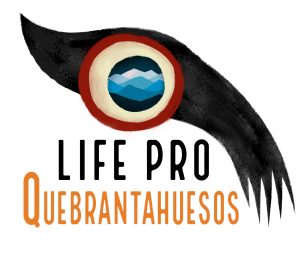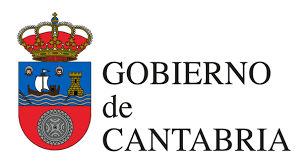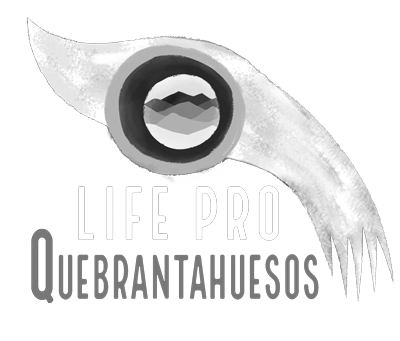The LIFE project “Iberian Corridors for the Bearded Vulture” is presented in Teruel.

Presentation of the LIFE project “Iberian corridors for the Bearded Vulture“in Teruel.
This Wednesday has been presented the LIFE project “Iberian Corridors for the Bearded Vulture” (LIFE20 NAT/ES/001363 – LIFE Pro Bearded Vulture) in the Parador de Alcañiz (Teruel).
The project, coordinated by the Foundation for the Conservation of the Bearded Vulture (FCQ), has a total budget of 2.678 million euros. Its objective is to recover the former distribution area of the species in the Iberian Peninsula and thus reduce the risk of extinction of the main bearded vulture population in the European Union.
In the past, the species occupied most of the European mountain systems. However, after the systematic elimination by man, it was gradually relegated to the Pyrenees and small residual nuclei in Crete and Corsica.
The project “Iberian Corridors for the Bearded Vulture” will last five years and will carry out different actions aimed at:
- Extending the area of distribution to the Maestrazgo region through the reintroduction of specimens.
- Extend the range of the species into the Central System (Gredos).
- Consolidate the reintroduced population in Picos de Europa (Cantabrian Mountains).
- To favor the settlement of specimens dispersed between the population centers in the north and south of the Iberian Peninsula (Moncayo).
- Replication and promotion of the geographic continuity of the species recovery (Portugal)
- Interconnection of the different populations
The bearded vulture species is at the highest level of protection in the European Union and, in Spain, it has also been declared an endangered species. The LIFE Pro Bearded Vulture project aims to stabilize the settlement of the population of these birds of prey in the different areas covered by the project. De este modo, se desea generar una meta-población que favorezca el flujo e intercambio de ejemplares entre poblaciones a través del corredor íbero cantábrico y facilitar la conservación de la especie ante posibles eventos catastróficos que pudieran afectar a alguno de sus núcleos reproductores. Likewise, this project is a clear example of the achievements obtained thanks to networking and public-private programs between administrations and conservation foundations.
On the other hand, the project aims to have a relevant socioeconomic impact as it seeks to closely link the conservation of the species with local rural development and the maintenance of ecosystem services. In this line, one of the actions of the Foundation for the Conservation of the Bearded Vulture that is generating more impact and is incorporated into this project is the Pro-Biodiversity Guarantee Mark that supports extensive livestock farming in mountain areas. This project also promotes ecotourism and favors the creation of specialized jobs and non-seasonal activities. This is yet another example of the importance of cooperation between companies, conservation organizations and public administrations.
In the constant search for synergies, close collaboration with Portugal is planned for the joint elaboration of the Iberian Strategy for the conservation of the bearded vulture, a basic framework on which to establish common conservation policies that will benefit the species.
The LIFE Program
“LIFE is a financial instrument of the European Commission that supports environmental and nature conservation projects within member states.”
ARAGÓN
The Autonomous Community of Aragon is key to the achievement of the project and the General Directorate of Natural Environment and Forest Management of the Government of Aragon participates in the project with an economic contribution of 340,000 euros over the five years.
The technical participation of the Government of Aragon is based, on the one hand, on the contribution of the experience acquired with the development of the actions included in the Bearded Vulture Recovery Plan and, fundamentally, on the cession of specimens of the species for their release in the different areas of the project. Specimens rescued from nests with a high probability of failure in the Aragonese Pyrenees thanks to the collaboration of technicians and agents for the protection of nature. These rescued specimens are bred in captivity at the Center for Breeding in Human Isolation (CRIAH) of La Alfranca and, subsequently, transferred for adaptation in the field breeding facilities of the National Park of Ordesa and Monteperdido. Finally, they are released in Maestrazgo, Gredos and Picos de Europa.
The presentation ceremony
The event began at 11:30 am at the Parador de Alcañiz and was attended by Alberto Hernandez, Director of the Parador de Alcañiz, Diego Bayona, Director General of Natural Environment and Forest Management of the Government of Aragon, Manuel Alcántara, Head of Biodiversity Service of the Government of Aragon, Elena Villagrasa, Director of the National Park of Ordesa and Monte Perdido (PNOMP) and Ignacio Montaner, Director General of Endesa in Aragon. It was also attended by representatives of the main sectors involved in the project (local, regional and county administration, Civil Guard, Nature Protection Agents, livestock sector, hunters, environmental organizations in the area and the general public). During the event, the actions to be developed over the 5 years of the project were presented, as well as the possible synergies between the different actors involved in the project.






